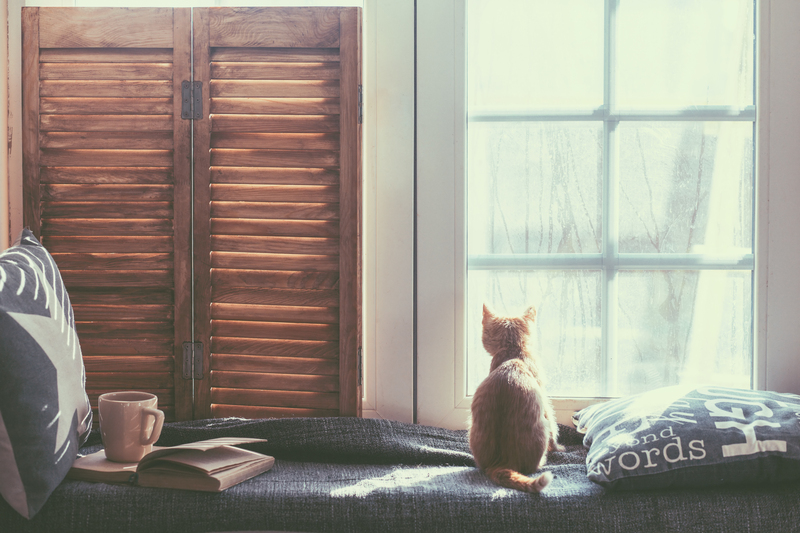A Greener Kitchen: Tips for Disposing Old Pots and Pans
As more households embrace sustainability, the kitchen stands as an important place to start. If you're wondering what to do with your worn-out cookware, you're not alone. Disposing old pots and pans in an eco-friendly way is easier than you might think. In this guide, we'll explore the most effective, responsible, and creative tips to keep your used kitchenware out of the landfill--and help you maintain a greener kitchen in the process.
Why Should You Reconsider Disposing of Old Pots and Pans?
Traditional disposal methods of kitchen cookware, like tossing them in the trash, have severe environmental impacts. Many pots and pans end up filling landfills or releasing toxins when incinerated. By finding alternative eco-friendly disposal options, you not only lessen your carbon footprint but also inspire a circular economy where items get a second life.
- Reduce landfill waste: Most cookware is not biodegradable and can persist for hundreds of years.
- Conserve resources: Recycling or reusing old pots and pans helps conserve raw materials needed to manufacture new ones.
- Minimize toxins: Non-stick coatings and metals can leak hazardous substances in landfill conditions.

Identifying Materials: What Are Your Pots and Pans Made Of?
Before you can choose the best method for disposing cookware, it's important to know what you're dealing with. Pots and pans are commonly made from:
- Aluminum (lightweight, often with a non-stick coating)
- Stainless steel (shiny, resistant to rust)
- Cast iron (heavy, dark, often seasoned)
- Copper (distinct reddish-brown appearance)
- Non-stick (Teflon or ceramic-coated)
- Enamel-coated (colorful outer layer over metal)
Note: The method of disposal depends on the material and condition of your old cookware.
Recycling Old Pots and Pans
Can You Recycle Pots and Pans?
The answer is yes, but with caveats. Metals are very recyclable, but not all recycling centers accept cookware due to handles, coatings, or attached plastic or glass parts.
How to Prepare Cookware for Recycling
- Remove non-metal components (like plastic handles or glass lids) if possible.
- Scrape off as much coating as you can: Non-stick coatings can complicate recycling.
- Check local guidelines: Use your city's website or call ahead to see what's accepted and if special drop-off is needed.
Where to Recycle Old Cookware
- Municipal recycling centers: Many will take metal items in scrap metal bins.
- Specialty metal recyclers: Some companies specialize in accepting all-metal cookware.
- City scrap drives: Occasional citywide-recycling events often collect cast iron, aluminum, and stainless steel pots and pans.
Pro Tip: If your cookware contains Teflon or similar non-stick coatings, some facilities may reject it. Always check first.
Donation: Giving Old Pots and Pans a Second Life
Reusing and donating are two of the most environmentally friendly options for disposing of old cookware. If your pots and pans are still functional, consider these options:
- Local charities: Shelters, food banks, and transitional housing often accept gently used cookware.
- Secondhand stores: Thrift shops and consignment stores love receiving kitchen donations.
- Community centers: Cooking classes, schools, or daycare centers sometimes need extra supplies.
- Friends and family: Someone you know might need extra pans for college or a first apartment.
Make sure your donations are clean, intact, and still safe for use. Excessively scratched or warped pans are better suited for recycling or upcycling.
Creative Upcycling: Transforming Old Pots and Pans
Upcycling is the process of repurposing items for new uses rather than recycling them. Old kitchenware, especially visually interesting or sturdy pans, can add a unique touch to your home or garden.
Fun Upcycling Ideas for Old Cookware
- Planters: Drill holes in the bottom for drainage and use as quirky flower pots or herb containers.
- Wall Art: Arrange and hang vintage pans as kitchen decor.
- Storage Solutions: Cast iron skillets make great holders for keys, office supplies, or fruit.
- Bird Baths or Feeders: Create a rustic outdoor feature by mounting old pans outside.
- Clocks: Turn a pan into a unique wall clock with a simple clock kit.
Bonus: Upcycling can be a fun and rewarding family project that also keeps waste out of landfills!
Proper Disposal of Non-Recyclable Cookware
Some pots and pans can't easily be recycled due to their material or heavy chemical coatings. Here's what to do:
- Hazardous waste collections: Some municipalities accept non-stick coated cookware along with electronics or other hazardous waste.
- Manufacturer take-back programs: Certain brands provide recycling or take-back programs for their products (e.g., Calphalon, Tefal).
- Garbage disposal as a last resort: If no option exists, wrap the item securely and place it with regular trash. Minimize this method!
Prioritize all other methods before considering disposal in the trash. Every pan recycled, donated, or upcycled makes a difference.
How to Maintain Your Kitchenware: Prolonging the Life of Pots and Pans
A truly green kitchen not only disposes responsibly but also reduces consumption. Proper maintenance extends the life of your pots and pans, saving resources in the long run.
Tips to Extend the Lifespan of Cookware
- Hand wash when possible: Dishwashers can be harsh, especially on non-stick and cast iron cookware.
- Avoid metal utensils: Use wood, silicone, or plastic to prevent scratching.
- Store properly: Don't nest delicate pans tightly to avoid warping or chipping.
- Season cast iron: Keep it rust-free and non-stick through regular oiling and heating.
- Follow manufacturer directions: Each material has specific care recommendations.
Treating your cookware with care means fewer replacements--a win for your wallet and the environment.
How to Choose Sustainable Cookware for a Greener Kitchen
If you must replace your old pots and pans, choose eco-friendly options to align your purchases with your green goals.
Consider These Factors When Buying New Cookware
- Material: Stainless steel, cast iron, and non-coated aluminum are the easiest to recycle.
- Durability: Invest in high-quality items that will last for decades, not just a few years.
- Recyclability: Check if the cookware can be easily recycled at the end of its life.
- Company practices: Some companies use recycled materials in their products or have take-back initiatives.
- Packaging: Look for brands that use minimal or recyclable packaging.
Your cookware purchase is an opportunity to support sustainable manufacturing and disposal practices. Every choice counts.

Frequently Asked Questions About Eco-Friendly Disposal of Pots and Pans
Can non-stick pans be recycled?
Non-stick pans are tricky because coatings can interfere with the recycling process. Most curbside recycling programs will not accept them. However, some metal scrap yards will take them if you remove the handles and as much coating as possible. Always check with your recycling provider.
What's the best way to dispose of rusty cast iron pans?
Cast iron is highly recyclable. If it's structurally damaged, take it to a scrap metal facility. Otherwise, restore and reuse it--removing rust can often revive even very old pans.
Is there any cookware that absolutely cannot be recycled?
Cookware with mixed materials (metal, plastic, glass combined) or with heavy chemical coatings often cannot be recycled. Consult your local waste authority for guidance.
Are there companies that offer cookware recycling programs?
Yes! Brands like Calphalon and TerraCycle sometimes offer take-back programs. Check brand websites or contact customer service for details.
Can I put old pots and pans in the blue bin?
Usually, no. Most curbside programs don't accept large metal items. Instead, bring them to a scrap metal recycler or special municipal program.
Conclusion: Small Steps Toward a Sustainable, Greener Kitchen
Disposing of old pots and pans need not result in sending more waste to the landfill. By making eco-conscious choices--through recycling, donation, creative upcycling, or proper hazardous waste disposal--you are directly contributing to a more sustainable planet.
Remember, every piece of cookware you divert from the landfill helps conserve resources, reduce pollution, and create a healthier environment for all. The next time you update your kitchen gear, consider not just what's new, but also what you'll do with what's old--because in the world of sustainable living, every pan really does matter.
Ready to make a change? Start today by sorting through your old pots and pans and choosing the greenest disposal option available. Your kitchen--and the planet--will thank you.



